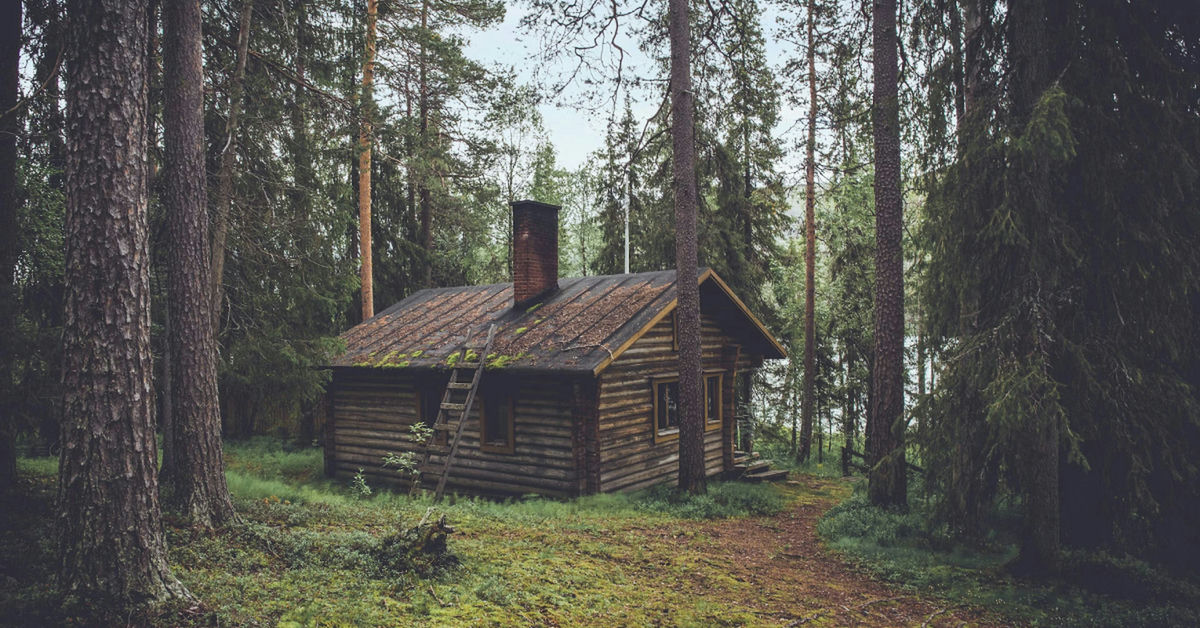What is non-standard construction?
Non-standard construction can include various materials such as timber, steel & concrete. Examples of non-standard construction properties include timber-framed homes, prefabricated homes, and properties with a thatched roof.
These buildings may have unique designs, unconventional shapes, or use alternative construction techniques. Non-standard construction properties can be found in different settings, such as rural areas, inner cities, and coastal locations.
Some of these buildings may have certain advantages, such as being environmentally friendly, energy-efficient, and cost-effective. However, non-standard construction can also present certain challenges and risks, such as difficulty in securing mortgages, obtaining insurance, potential for higher maintenance costs, and reduced resale value.
It is essential to seek professional advice and ensure that any non-standard construction property complies with relevant building codes and regulations before buying or investing.
What is a non-standard construction mortgage?
A non-standard construction mortgage is a mortgage that is designed specifically for financing the construction of unique or unconventional homes that do not meet the typical lending standards.
Because these types of homes are not typical, they may not meet the requirements for traditional mortgage financing. As a result, non-standard construction mortgages may have different underwriting standards, appraisal requirements, and loan terms compared to standard mortgages. It is important to note that non-standard construction mortgages can be more difficult to obtain and may have higher interest rates or fees due to the higher risk involved.
There are all sorts of construction types that can fall into the non-standard category, including:
- Thatched roofs
- Concrete prefabs
- Steel frames
- Listed country cottages
- Single brick
- Flats in high rises
- Timber frames
- And many more…
Is it possible to get a mortgage on a non-standard construction property?
Yes, it is possible to get a mortgage on a non-standard construction property, although it can be more difficult than getting a mortgage on a traditional property.
Non-standard construction properties are those that are built using unconventional materials or construction methods, or those that do not conform to the standard construction guidelines set out by lenders.
Lenders may view non-standard construction properties as a higher risk than traditional properties, as they may be more susceptible to damage or may have a lower resale value.
As a result, lenders may require a higher deposit or interest rate for these types of properties.
However, there are specialist lenders who offer mortgages for non-standard construction properties.
It is also helpful to provide as much information as possible about the construction of the property, including any surveys or reports, to demonstrate its quality and condition to potential lenders.
Speak To an Expert
Whether you’ve just had an offer accepted on a property and you’re ready to go, or you’re simply wondering how much you need to save for a deposit, it’s never too soon to reach out.
What else is there to know about non-standard construction mortgages?
Maintenance can be a dealbreaker, and it may not be cheap.
Non-standard construction properties can require specific maintenance and treatments, which can be expensive and impact the property’s overall value if neglected.
It’s essential to understand these maintenance requirements and factor them into your decision to purchase a non-standard construction property.
Before applying for a non-standard construction mortgage, it’s important to have a survey carried out by a qualified surveyor who has experience in assessing non-standard construction properties.
The survey will provide you with a detailed report on the condition of the property and any specific maintenance or treatment requirements.
Lenders may also require you to have a maintenance plan in place as part of your mortgage deal. This plan will outline the specific maintenance and treatment requirements for the property and how they will be carried out.
It’s important to factor in these ongoing costs into your budget when considering a non-standard construction property.
A non-standard construction could be converted into a more mortgageable property
It is possible to modify certain property types to make them safer and reduce structural risk. This may move them within the boundaries of a ‘standard construction’.
Reinforcing a steel-framed house frame is one such modification that can be done to improve the structural integrity of the property.
However, it is important to note that reinforcing a steel-framed house can be a complex and expensive process, and it is not always necessary.
It is important to consult with a qualified structural engineer or building contractor to determine whether reinforcement is required, and to obtain a detailed cost estimate for the work.
It may be difficult to sell a non-standard property later on
Yes, this is a valid concern for those who are considering purchasing a non-standard property.
Non-standard mortgages are considered a niche lending market, and therefore, the eligibility criteria may be stricter and more limited than that of a standard mortgage.
This means that while you may have been able to secure a mortgage for your non-standard property, it may be more difficult for a future buyer to obtain a mortgage if lending criteria changes in the future.
Insurance may be expensive or difficult to get
Insurers tend to approach non-standard properties with more caution, as they may present unique risks that are not present in standard properties.
As a result, the premiums for non-standard properties may be higher than those for standard properties.
However, there are specialist insurers who have more experience with non-standard property types and may be able to offer more competitive premiums.
It’s always a good idea to shop around and compare quotes from multiple insurers to find the best deal for your non-standard property.
Ultimately, non-standard mortgages aren’t hugely different to standard mortgages
Non-standard construction mortgages are similar to standard construction mortgages in terms of the basic mechanics of the loan, such as the requirement to make regular payments and the use of the property as collateral.
However, because non-standard constructions are often viewed as more high-risk, lenders may apply more strict terms and requirements to these types of mortgages.
- Higher interest rates
- Lower LTVs
- Stricter affordability requirements
What other types of non-standard construction houses exist?
Clay lump
Clay lump houses were particularly common in Norfolk in the 19th and early 20th centuries.
Clay lump construction involves using a mix of clay, straw, and other materials to create a type of adobe brick, which is then used to build the walls of the house.
Over time, many clay lump houses have fallen into disrepair due to improper maintenance, exposure to the elements, and other factors. In some cases, this has led to the partial or complete collapse of the building.
K Lath
K Lath is a type of reinforced mesh that is often used in the construction of stucco walls and other types of cladding.
It consists of a wire mesh that is coated with a layer of asphalt or other materials to provide additional reinforcement and help hold the stucco or cladding material in place.
COB
Cob is a traditional English construction style that is still found in some parts of the country, particularly in Cumbria and the Southwest of England.
It involves using a mix of clay, sand, and other materials to create a type of adobe brick, which is then used to build the walls of the house.
Which are the best non-standard construction mortgage lenders?
When it comes to choosing a lender for a non-standard construction mortgage, it’s important to consider your own circumstances and the specific details of the property you are looking to finance.
Different lenders may have different policies and requirements, and what works for one borrower may not be the best option for another.
Some lenders, such as Santander, may be more willing to lend on properties with steel frames, while others, like Halifax, may have more restrictive policies on certain types of construction materials or techniques.
Similarly, some lenders may be more comfortable with certain types of non-standard properties, such as ex-local authority flats, while others may have more stringent requirements.
Why is it more difficult to get a non-standard construction mortgage?
Mortgage lenders consider the resale market when assessing the risk associated with lending on a non-standard property.
In the event that a borrower defaults on their mortgage repayments, the lender may need to repossess the property and resell it in order to recoup their losses.
In the case of a non-standard property, there may be less demand from buyers, which could make it more difficult for the lender to sell the property and recover their losses.
Furthermore, lenders may be concerned about the potential for the value of a non-standard property to decrease over time, particularly if the property is not well-maintained or if the construction type is considered to be less desirable.
Strive Mortgages can help?
Working with a whole-of-market mortgage broker can be a smart move when it comes to securing a mortgage on a non-standard property.
Because non-standard properties can be more complex and come with additional risks, it can be helpful to have a broker with expertise in this area who can guide you through the process and help you find lenders who are a good fit for your needs.
A whole-of-market broker like Strive Mortgages can provide valuable insight into the different lenders and their policies on non-standard properties, as well as help you navigate any additional requirements or documentation that may be needed.
Speak with a non-standard construction mortgage expert today
If you still have questions about non-standard construction mortgages, the experts at Strive Mortgages can give you the right advice.
For more information on non-standard construction mortgages, please contact a member of the Strive team, by emailing info@strivemortgages.co.uk or call us on 01273002697.

